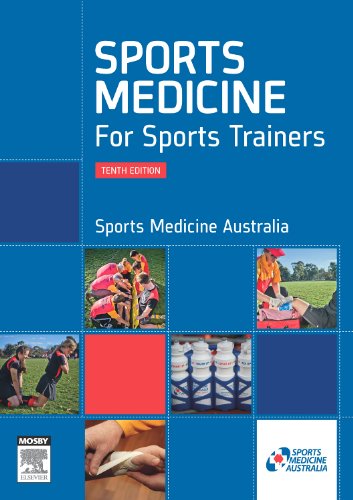

Most ebook files are in PDF format, so you can easily read them using various software such as Foxit Reader or directly on the Google Chrome browser.
Some ebook files are released by publishers in other formats such as .awz, .mobi, .epub, .fb2, etc. You may need to install specific software to read these formats on mobile/PC, such as Calibre.
Please read the tutorial at this link. https://ebooknice.com/page/post?id=faq
We offer FREE conversion to the popular formats you request; however, this may take some time. Therefore, right after payment, please email us, and we will try to provide the service as quickly as possible.
For some exceptional file formats or broken links (if any), please refrain from opening any disputes. Instead, email us first, and we will try to assist within a maximum of 6 hours.
EbookNice Team

Status:
Available4.8
12 reviews
ISBN 10: 1875897599
ISBN 13: 978-1875897599
Author: Sports Medicine Australia
This text provides an easy-to-read introduction to the basic principles of sports medicine for people of all sporting backgrounds and interests. It gives readers practical knowledge in areas such as injury prevention, injury management, crisis management techniques and optimising performance. Topics covered include: · management of common sporting injuries · how to conduct warm up, stretching and cool down sessions · using taping to prevent or reduce severity of injuries · principles of sports nutrition. Examples are drawn from a wide variety of sports. Developed by Sports Medicine Australia, it provides you with the information you need to help athletes prevent injuries, to reduce the severity of injuries that occur, and to prevent injuries from re-occurring.
Front Matter
Logos page
Foreword
Editor's Note and Acknowledgements
Picture credits
Introduction
About this book
Sports Medicine Australia Safer Sport Program
The SMA Safer Sport Program and the Australian Qualifications Framework
Recognition of prior learning (RPL)
Applying for recognition of prior learning
Career prospects
Chapter One: The Sports Trainer in Action
Learning outcomes, assessment, scenario
Introduction to sports trainer role
Legal responsibilities: consent, duty of care, negligence
Scope of practice and insurance
Health, safety and wellbeing
Relationships with other health professionals
Professional conduct and communication
Hand signals and emergency communication
Continuing education and equipment
Documentation and ethics
Chapter Two: Functional Musculoskeletal Anatomy
Anatomical terminology and movements
Skeletal system: bones and injuries
Joints: types, structure, injuries
Muscular system: function, structure, injuries
Tendons, ligaments, bursae
Chapter Three: Preventing Sports Injuries
Injury prevention principles
Risk factors and environmental considerations
Warm-ups, injury prevention programs
Stretching and flexibility
Cool-down and recovery
Sports massage
Protective equipment
Preventive taping and bracing
Chapter Four: Sports Nutrition
Dietary guidelines and energy sources
Macronutrients and micronutrients
Water and hydration
Pre-event and recovery nutrition
Food labelling
Chapter Five: Drugs in Sport
Drug classifications and effects
Legal and illegal drugs
Drug testing and doping
Therapeutic use exemptions
Advice for support staff
Chapter Six: Principles of Injury Management
Emergency principles: DRSABCD
Chain of survival and CPR
On-field (STOP) and full (TOTAPS) assessment
Handover and follow-up
Chapter Seven: Common Sporting Illnesses and Injuries
Shock, bleeding, hard/soft tissue injuries
Fractures, dislocations, sprains, strains
Overuse and spinal injuries
Brain, dental, chest, abdominal, genital injuries
Environmental injuries: heat, cold, wound care
Chapter Eight: Common Medical Conditions Affecting Athletes
Asthma, diabetes, epilepsy
Cardiovascular emergencies
Diving emergencies
Viral illnesses and chronic conditions
Chapter Nine: Moving Injured Athletes
When and how to move athletes
Spinal injury protocols
Scoop stretchers and spinal boards
Cervical collar use and lifting techniques
Chapter Ten: Sports Taping
Taping aims, materials and methods
Finger, thumb, ankle, knee, shoulder taping
Post-taping checks and removal
Appendices
A: Sports first aid kit contents
B: Sports trainer management flow chart
C: Injury report form
D: Athlete medical profile form
E: Resources for sports trainers
Glossary
Index
sports medicine specialist
sports medicine for athletes
sports medicine specialist schooling
sports medicine specialty
a sports medicine physician
Tags: Sports Medicine Australia, Sports Medicine, Sports Trainers